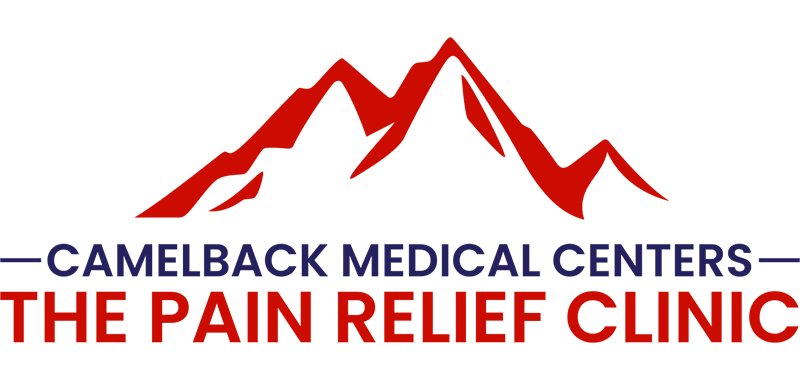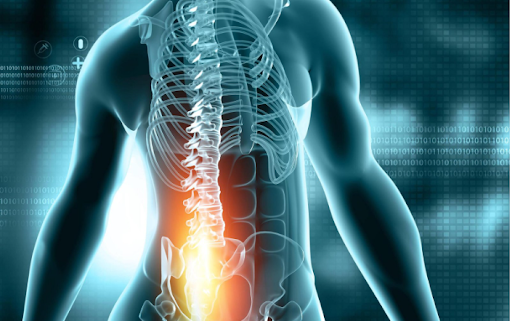Understanding Nerve Pain: Symptoms, Causes, and Effective Treatments
Introduction
Nerve pain, also known as neuropathic pain, is a complex and often debilitating condition that affects millions of people worldwide. It arises from damage or dysfunction in the nerves that form the body’s feedback system. This system is vital for our safety and quality of life; when impaired, it can lead to chronic pain and other significant health issues.
Understanding nerve pain is crucial for improving one’s quality of life. Chronic pain can severely limit daily activities, impacting everything from mobility to mental health. Knowledge about its symptoms, causes, and treatments empowers individuals to seek appropriate care and management strategies.
Statistics highlight the prevalence of nerve pain in the U.S.:
- Approximately 20 million Americans suffer from some form of nerve pain.
- Diabetes is a leading cause, accounting for about 70% of cases.
- High-contact sports and degenerative diseases also contribute significantly.
By exploring the various aspects of nerve pain—including its symptoms, causes, and available treatments—you gain valuable insights into managing this challenging condition effectively.
Understanding Nerve Pain
What is Nerve Pain?
Nerve pain, also known as neuropathic pain, happens when there’s damage or problems in the nervous system. It’s different from the usual pain we feel from injuries like cuts or bruises. In this case, the nerves themselves are hurt or not working properly, sending wrong signals to the brain.
How Our Body’s Feedback System Works
Our body has a feedback system that’s crucial for keeping us safe and comfortable. Here’s how it works:
- Detection: Sensory nerves pick up on things like heat, cold, and touch.
- Transmission: These nerves send messages to the brain.
- Interpretation: The brain figures out what these messages mean.
- Response: Based on this understanding, the brain tells the body how to react.
For example, if you touch something hot, your sensory nerves immediately inform your brain, which then tells your hand to move away quickly.
But sometimes, due to nerve damage, this system doesn’t work correctly. You might feel pain even when there’s no actual injury or lose feeling in certain areas.
Different Types of Nerve Damage
There are over 100 types of nerve damage, each affecting different parts of the body:
- Peripheral Nerve Damage: This affects nerves outside the brain and spinal cord. It’s common in conditions like diabetic neuropathy.
- Autonomic Nerve Damage: This impacts internal organs and can cause issues like digestive problems and unusual changes in blood pressure.
- Motor Nerve Damage: This leads to muscle weakness, twitching (fasciculation), and even paralysis.
- Sensory Nerve Damage: This results in dulled senses and strange feelings like burning or tingling throughout the body.
Common Causes of Peripheral Nerve Damage
Most cases of nerve damage (about 70%) are due to diabetes, leading to peripheral neuropathy. This condition usually starts in the legs and feet with symptoms like numbness, tingling, and severe pain.
High-contact sports also play a big role in causing peripheral nerve damage because they put a lot of stress on nerves through constant impact.
Other causes include:
- Degenerative Disc Disease: This causes discomfort in the back and neck due to worn-out spinal discs.
- Cancerous Tumors: These put pressure on nearby nerves, leading to significant pain.
Understanding these various types of nerve damage is crucial for targeted treatment strategies that can effectively alleviate symptoms.
Common Symptoms of Nerve Pain
Nerve pain, often referred to as neuropathic pain, shows up in different ways and can seriously affect your daily life. It’s important to know these symptoms for early diagnosis and proper treatment.
Common Symptoms
- Numbness and Tingling Sensations:
○ Many individuals experience numbness, often accompanied by tingling sensations, especially in the extremities. This symptom can lead to a reduced ability to feel textures and temperatures.
- Burning Sensations:
○ A persistent burning sensation is another hallmark of nerve pain. This burning can be localized or spread over larger areas, making it difficult to perform routine activities.
- Muscle Weakness:
○ Muscle weakness is a frequent complaint among those suffering from nerve pain. This weakness can lead to difficulties in movement and coordination, affecting balance and gait.
Sensory vs. Motor Symptoms
Understanding the difference between sensory and motor symptoms helps in pinpointing the type of nerve damage:
Sensory Symptoms:
These symptoms affect how you feel physical sensations. Examples include:
- Numbness
- Burning
- Prickling or tingling sensations
- Loss of sensation leading to a decreased ability to detect pain or temperature changes.
Motor Symptoms:
These symptoms impact muscle function and movement. Examples include:
- Muscle weakness
- Fasciculation (muscle twitching)
- Difficulty with fine motor skills such as writing or buttoning a shirt
- In severe cases, paralysis.
Identifying whether your symptoms are sensory or motor in nature aids in diagnosing the specific type of nerve damage you may be experiencing.
Nerve pain’s varied presentations underscore the importance of paying attention to these common indicators. Early detection facilitates timely intervention, potentially mitigating more severe outcomes.
Specific Symptoms Related to Conditions Causing Nerve Pain
Diabetic Neuropathy
Diabetic neuropathy is a common complication of diabetes, affecting approximately 50% of individuals with the condition. High blood sugar levels lead to nerve damage, which manifests in various symptoms:
- Numbness and Tingling: Most often experienced in the legs and feet, this can progress to the arms and hands.
- Sharp Pains or Cramps: These may be intermittent or persistent.
- Increased Sensitivity: Even light touches can cause pain.
- Muscle Weakness: This can affect balance and coordination.
Postherpetic Neuralgia after Shingles
Postherpetic neuralgia (PHN) is a painful condition that follows an outbreak of shingles. The varicella-zoster virus, which causes shingles, damages nerve fibers, leading to persistent pain even after the rash heals:
- Burning Sensation: A constant burning feeling in the affected area.
- Sensitive Skin: Mild stimuli like clothing or wind can cause significant pain.
- Itching and Numbness: These sensations often accompany the burning pain.
Peripheral Neuropathy
Peripheral neuropathy affects nerves outside the brain and spinal cord. It can result from various causes including diabetes, infections, and autoimmune disorders. Symptoms impact both sensory and motor functions:
- Balance Issues: Patients may experience unsteadiness while walking.
- Touch Sensitivity: An increased sensitivity to touch often results in discomfort from everyday activities.
- Muscle Weakness: This can lead to difficulties with movement and coordination.
Understanding these specific symptoms related to conditions causing nerve pain provides crucial insights into their management and treatment. Identifying these symptoms early allows for timely intervention, potentially reducing the severity of nerve damage.
Medical Conditions That Cause Nerve Pain
Several medical conditions result in nerve pain, often referred to as neuropathy. These conditions cause nerve damage either directly or indirectly, leading to significant discomfort and impairment.
Autoimmune Disorders Causing Nerve Pain
Autoimmune disorders are a primary source of nerve pain. These conditions occur when the body’s immune system mistakenly attacks its tissues, including nerves. Examples include:
- Lupus: This chronic autoimmune disease can cause inflammation and damage to various body parts, including the nervous system. Symptoms include numbness, tingling, and muscle weakness.
- Rheumatoid Arthritis: Another autoimmune disorder that primarily affects joints but can also lead to peripheral neuropathy. Patients may experience burning sensations and loss of motor function.
- Sjogren’s Syndrome: This condition primarily affects moisture-producing glands but can also damage nerves, leading to sensations of burning or prickling.
Degenerative Disc Disease Leading to Nerve Discomfort
Degenerative disc disease is a condition that affects the spinal discs, causing them to break down over time. This degeneration can lead to severe back and neck pain due to nerve compression.
- As the discs deteriorate, they lose their cushioning ability, causing vertebrae to rub against each other. This friction can pinch adjacent nerves.
- Common symptoms include sharp or chronic pain in the back or neck. Patients may also experience radiating pain down the arms or legs if the affected nerve roots are near these areas.
Cancerous Tumors Pressing Against Nerves
Cancerous tumors can exert pressure on nearby nerves, leading to debilitating pain. This is common in cancers where tumors grow close to the spine or peripheral nerves.
- As tumors expand, they may press against nerves, causing pain signals.
- Treatments such as chemotherapy and radiation can also contribute to nerve damage and subsequent neuropathic pain.
Understanding these underlying causes is crucial for effective treatment strategies aimed at alleviating nerve pain.
Lifestyle Factors Contributing to Nerve Pain Development
Lifestyle choices play a significant role in the development of peripheral nerve damage.
High-Contact Sports
High-contact sports pose a substantial risk for peripheral nerve injuries. Activities like football, boxing, or rugby often lead to repeated trauma or acute injuries that can damage nerves. Continuous pressure or impact can result in nerve compression, leading to pain and functional impairment.
Diabetes
Another critical factor is diabetes. According to statistics, diabetes is one of the leading causes of nerve pain. Approximately 70% of nerve damage cases are related to diabetes. High blood sugar levels can harm nerves over time, resulting in diabetic neuropathy. This condition frequently manifests as numbness, tingling, or burning sensations in the legs and feet.
Understanding these factors emphasizes the importance of lifestyle modifications and proactive health management in preventing nerve pain.
Medication-Based Treatments for Nerve Pain Relief
Pharmacological treatments offer a range of options for managing nerve pain effectively. Some of the most commonly prescribed medications include anticonvulsants, antidepressants, and opioids.
Anticonvulsants for Treating Nerve Pain
Anticonvulsants, originally developed to treat epilepsy, have proven effective in reducing nerve pain. These medications stabilize electrical activity in the nerves, thereby decreasing pain signals sent to the brain. Common anticonvulsants used for nerve pain include:
- Gabapentin (Neurontin): Often prescribed for diabetic neuropathy and postherpetic neuralgia.
- Pregabalin (Lyrica): Used for conditions like fibromyalgia and spinal cord injury-related neuropathic pain.
Patients often experience relief within a few weeks of starting these medications. However, potential side effects such as dizziness and drowsiness should be monitored closely.
Antidepressants for Managing Chronic Pain
Certain antidepressants are also effective at alleviating chronic nerve pain. These medications influence neurotransmitters like serotonin and norepinephrine, which play a role in pain perception. Popular antidepressants used in nerve pain management include:
- Tricyclic Antidepressants (TCAs): Examples include amitriptyline and nortriptyline. They are particularly useful for conditions like diabetic neuropathy.
- Serotonin-Norepinephrine Reuptake Inhibitors (SNRIs): Duloxetine (Cymbalta) and venlafaxine (Effexor) fall into this category, offering benefits for conditions like fibromyalgia and certain types of peripheral neuropathy.
Patients find that these medications not only help with pain relief but also improve sleep and overall mood, contributing to a better quality of life.
Opioids for Severe Cases
For severe cases of nerve pain that do not respond to other treatments, opioids may be considered. These powerful painkillers work by binding to opioid receptors in the brain, blocking the perception of pain. Commonly prescribed opioids include:
- Morphine
- Oxycodone
- Hydrocodone
Due to their potential for dependency and other serious side effects, opioids are usually reserved for short-term use or under strict medical supervision. Doctors often weigh the risks versus benefits before prescribing these medications.
Non-Medical Treatments That Help Alleviate Nerve Pain Symptoms
Chiropractic Care
Acupuncture for Chronic Pain Relief
Acupuncture has gained significant recognition for its role in managing chronic pain, including nerve pain. This traditional Chinese medicine technique involves inserting fine needles into specific points on the body to stimulate nerve endings. The primary benefit of acupuncture is its ability to balance energy flows, which can lead to substantial pain relief.
Several studies have shown that acupuncture can:
- Reduce inflammation: By stimulating specific points, acupuncture can decrease the levels of pro-inflammatory markers, reducing overall inflammation.
- Improve blood flow: Enhanced circulation can aid in delivering essential nutrients and oxygen to damaged nerves, facilitating healing.
- Trigger endorphin release: Endorphins are the body’s natural painkillers. Acupuncture promotes their release, which helps mitigate pain sensations.
Physical Therapy and Exercise
Engaging in physical therapy and exercise can be an effective non-medical treatment for nerve pain. Tailored exercise programs can help strengthen muscles, improve flexibility, and enhance overall mobility. Physical therapists often recommend:
- Stretching exercises: These can relieve tension in muscles surrounding affected nerves.
- Strength training: Building muscle strength helps support and protect the affected areas.
- Aerobic exercises: Activities like walking or swimming improve cardiovascular health and promote overall well-being.
Nutritional Supplements
Certain nutritional supplements have been found beneficial in managing nerve pain. Key supplements include:
- Alpha-lipoic acid: Known for its antioxidant properties, it helps reduce oxidative stress on nerves.
- B vitamins (B1, B6, B12): These vitamins play a vital role in maintaining nerve health and can aid in nerve repair.
Mind-Body Techniques
Mind-body techniques such as meditation and mindfulness can also provide relief from nerve pain. These practices focus on reducing stress and promoting relaxation:
- Meditation: Regular practice can lower stress levels, which may exacerbate nerve pain.
- Mindfulness-based stress reduction (MBSR): This structured program teaches individuals how to manage pain through mindfulness techniques.
Massage Therapy
Massage therapy offers another avenue for alleviating nerve pain symptoms. By manipulating muscles and soft tissues, massage therapists can:
- Reduce muscle tension: Easing tightness around affected nerves can decrease discomfort.
- Enhance circulation: Improved blood flow helps nourish nerves and reduce inflammation.
Incorporating these non-medical treatments into your routine may provide comprehensive relief from nerve pain symptoms. Balancing different approaches ensures you address both the physical and psychological aspects of chronic pain management.
Frequently Asked Questions
What is nerve pain and why is it significant?
Nerve pain, also known as neuropathic pain, is a type of chronic pain resulting from damage to the peripheral nerves. Understanding nerve pain is crucial for improving quality of life, as it can significantly affect daily activities and overall well-being. Statistics indicate that nerve pain affects millions of individuals in the U.S.
What are the common symptoms associated with nerve pain?
Common symptoms of nerve pain include numbness and tingling sensations, burning sensations, and muscle weakness. These symptoms can be categorized into sensory symptoms (like numbness) and motor symptoms (like muscle weakness), helping to differentiate the underlying causes of nerve discomfort.
What medical conditions can lead to nerve pain?
Several medical conditions can cause nerve pain, including autoimmune disorders such as lupus and rheumatoid arthritis, as well as degenerative disc disease. These conditions can lead to nerve damage and discomfort in various parts of the body, particularly in the back and neck.
How do lifestyle factors contribute to the development of nerve pain?
Lifestyle factors play a significant role in the development of nerve pain. For instance, high-contact sports can increase the risk of peripheral nerve damage, while diabetes is one of the leading causes of neuropathic pain. Maintaining a healthy lifestyle may help mitigate these risks.
What types of medication are used for treating nerve pain?
Pharmacological treatments for nerve pain management often include anticonvulsants and antidepressants, which have been shown to alleviate chronic pain symptoms. In severe cases, opioids may also be prescribed under careful medical supervision to manage intense discomfort.
Are there non-medical treatments available for alleviating nerve pain symptoms?
Yes, non-medical treatments such as acupuncture have been found beneficial in balancing energy flows within the body, providing relief from chronic pain symptoms associated with nerve damage. These alternative therapies can complement traditional medical approaches for managing nerve pain.




